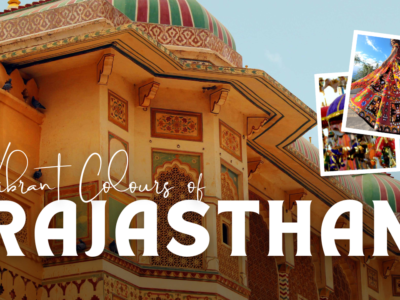
Kedarkantha Trek Overview:
Situated at the lap of the Himalayas, the Kedarkantha Trek is a breathtaking journey that lures adventurers from around the globe. Picture this: lush green meadows, towering pine forests, and majestic snow-capped peaks painting the landscape. Starting from the quaint village of Sankri in Uttarakhand, India, this trek takes you on a rollercoaster ride of nature’s wonders.
Over the course of 6 days, trekkers traverse through diverse terrain, from serene oak forests to icy slopes, each step unveiling a new facet of Mother Nature’s beauty. The highlight? The summit day, where the world seems to bow at your feet as you stand atop the Kedarkantha peak, soaking in panoramic views that words fail to describe.
But it’s not just about the destination; it’s about the journey. Along the way, encounter warm hospitality in local villages, share stories around campfires, and forge bonds that last a lifetime. The Kedarkantha Trek isn’t just a trek; it’s an experience of a lifetime.
Kedarkantha Trek Highlights:
- Scenic Beauty: As you trek through the Kedarkantha trail, you’ll be treated to an ever-changing landscape that never fails to amaze. From the lush greenery of the lower valleys to the ethereal beauty of snow-covered peaks, every step offers a new visual feast. Take in the sight of ancient pine forests blanketed in snow, mirrored by pristine alpine lakes reflecting the azure sky above. The play of light and shadow on the rugged Himalayan terrain creates a surreal atmosphere that will leave you spellbound.
- Summit Thrill: Standing atop the Kedarkantha peak is an experience like no other. As you reach the summit, a sense of accomplishment washes over you, knowing that you’ve conquered one of the Himalayas’ majestic peaks. Take a moment to catch your breath and soak in the breathtaking 360-degree views that stretch as far as the eye can see. Marvel at the jagged peaks of Swargarohini, the graceful curves of Bandarpoonch, and the imposing presence of Black Peak, all framed by the vast expanse of the sky above.
- Varied Terrain: The Kedarkantha trek offers a diverse range of terrain to traverse, keeping you engaged and enthralled every step of the way. Start your journey on gentle forest trails, winding your way through dense oak and rhododendron forests alive with birdsong. As you ascend higher, the landscape transforms into a winter wonderland, with snow-clad slopes and frozen streams challenging your endurance. Navigate rocky ridges and icy slopes with the help of experienced guides, each step bringing you closer to the summit and closer to nature.
- Local Culture: One of the highlights of the Kedarkantha trek is the opportunity to interact with the warm and hospitable locals who call the Himalayas home. Along the trail, you’ll pass through quaint mountain villages where time seems to stand still. Take the time to chat with villagers, learn about their customs and traditions, and sample local delicacies prepared with love and care. You’ll be welcomed with open arms and leave with a deeper appreciation for the rich cultural heritage of the region.
- Campfire Stories: After a day of trekking, there’s nothing better than gathering around a crackling campfire with your fellow trekkers, swapping stories and sharing laughs under the starlit sky. As the flames dance and the night grows darker, tales of adventure and camaraderie flow freely, creating bonds that transcend language and culture. Whether you’re a seasoned trekker or a first-time adventurer, the sense of community fostered around the campfire is sure to leave a lasting impression.
- Wildlife Encounters: Keep your eyes peeled for glimpses of the diverse wildlife that call the Himalayas home. From the elusive musk deer to the vibrant monal pheasants, the forests and meadows of the Kedarkantha trail are teeming with life. Listen for the haunting calls of the Himalayan langurs echoing through the trees, and watch in awe as eagles soar overhead on thermal currents. Every encounter with these majestic creatures is a reminder of the rich biodiversity of the region and the importance of preserving it for future generations.
- Photography Paradise: With its stunning natural beauty and dramatic landscapes, the Kedarkantha trek is a paradise for photographers of all skill levels. From sweeping vistas to intimate close-ups, every corner of the trail offers endless opportunities to capture the beauty of the Himalayas in all its glory. Whether you’re a professional photographer armed with top-of-the-line gear or simply snapping away on your smartphone, you’ll find no shortage of subjects to photograph. From the first light of dawn to the last rays of sunset, the changing colors and textures of the landscape provide a feast for the eyes and the lens.
- Personal Growth: Beyond the physical challenges of the trek, the Kedarkantha trail offers a journey of personal growth and self-discovery. As you push your limits and step out of your comfort zone, you’ll discover reserves of strength and resilience you never knew you had. With each step forward, you’ll gain confidence in your abilities and a deeper appreciation for the beauty and wonder of the natural world. Whether you reach the summit or not, the lessons learned and the memories made along the way will stay with you long after the trek is over, inspiring you to seek out new adventures and embrace life to the fullest.
How to reach Kedarkantha Trek:
By Air:
- Dehradun Airport (Jolly Grant Airport): The nearest airport to Sankri, the starting point of the Kedarkantha Trek, is the Dehradun Airport, also known as Jolly Grant Airport. From major cities like Delhi, Mumbai, and Bengaluru, there are regular flights to Dehradun. Upon reaching Dehradun, you can hire a taxi or take a bus to Sankri, which is approximately 200 kilometers away. The journey by road takes around 8-10 hours, depending on the traffic and road conditions
By Road:
- Delhi to Sankri: If you’re traveling from Delhi, you can take a direct bus or hire a taxi to Sankri. The distance between Delhi and Sankri is around 450 kilometers, and the journey by road takes approximately 12-14 hours, depending on the route and traffic. The route passes through cities like Dehradun, Mussoorie, and Purola before reaching Sankri.
By Car:
- Self-Drive: If you prefer the flexibility and convenience of driving your own car, you can embark on a road trip from your city to Sankri. From Delhi, take the NH44 towards Dehradun, then follow the signs towards Purola and continue on the State Highway towards Sankri. The entire journey is around 450 kilometers and takes about 12-14 hours, depending on the traffic and road conditions. Make sure to plan your route in advance and carry sufficient fuel and supplies for the journey, as facilities may be limited in remote areas.
Things to Carry for Kedarkantha Trek:
1. Warm Clothing: When it comes to clothing, think layers! Start with thermal innerwear to keep your body heat trapped close to your skin. Layer up with fleece jackets or sweaters for insulation, and top it off with a down jacket to shield yourself from biting winds. Don’t forget to pack plenty of woollen socks to keep your feet warm and dry throughout the trek. - Sturdy Footwear: Your choice of footwear can make or break your trekking experience. Invest in sturdy, waterproof boots with good insulation and traction to navigate the icy terrain safely. Look for boots with ankle support to prevent injuries on uneven surfaces. Breaking in your boots before the trek is crucial to avoid blisters and discomfort along the way.
- Sleeping Bag: A high-quality sleeping bag is your best friend during cold nights in the Himalayas. Opt for a sleeping bag rated for sub-zero temperatures to ensure a restful night’s sleep. Consider bringing a sleeping bag liner for extra warmth and comfort. It’s also a good idea to invest in a lightweight, compact sleeping bag that won’t weigh you down during the trek.
- Backpack: Your backpack is your lifeline on the trek, carrying all your essentials for survival. Choose a sturdy, waterproof backpack with padded shoulder straps and a hip belt for comfort. Look for one with multiple compartments to keep your gear organized and easily accessible. Pack essentials like water, snacks, extra layers of clothing, and personal items in your backpack, and don’t forget to pack light to minimize strain on your back.
- Headlamp or Flashlight: A reliable light source is essential for navigating in the dark, especially during early morning or late evening treks. Invest in a high-quality headlamp or flashlight with long battery life and adjustable brightness settings. Consider bringing extra batteries or a portable charger to ensure your light source doesn’t fail when you need it most.
- Water Bottle: Staying hydrated is key to staying healthy and energized during the trek. Bring a durable water bottle that won’t freeze easily in cold temperatures. Consider using an insulated water bottle or storing your water bottle in an insulated sleeve to prevent freezing. Hydration packs are another convenient option for staying hydrated on the go.
- Snacks: Fuel your trekking adventures with high-energy snacks like nuts, chocolate, energy bars, and dried fruits. Pack snacks that are lightweight, compact, and easy to eat on the move. Aim for a balance of carbohydrates, protein, and healthy fats to keep your energy levels up throughout the trek. Don’t forget to pack extra snacks to share with your fellow trekkers and spread the joy!
- Personal Medications: Be prepared for emergencies by bringing along any necessary medications and a basic first aid kit. Consider packing essentials like pain relievers, antidiarrheal medication, antiseptic wipes, bandages, blister pads, and insect repellent. If you have any pre-existing medical conditions, make sure to bring enough medication to last the duration of the trek and inform your trekking guide or group leader about your condition.
- Sun Protection: Protect yourself from the harsh rays of the sun with sunscreen, sunglasses, and lip balm with SPF. Even in cold temperatures, the sun’s rays can be intense at high altitudes, leading to sunburn and windburn. Apply sunscreen generously to exposed skin, including your face, neck, and hands, and reapply regularly throughout the day. Wear UV-protective sunglasses to shield your eyes from harmful UV rays and prevent snow blindness. Don’t forget to protect your lips with a moisturizing lip balm that contains SPF to prevent chapping and sunburn.










